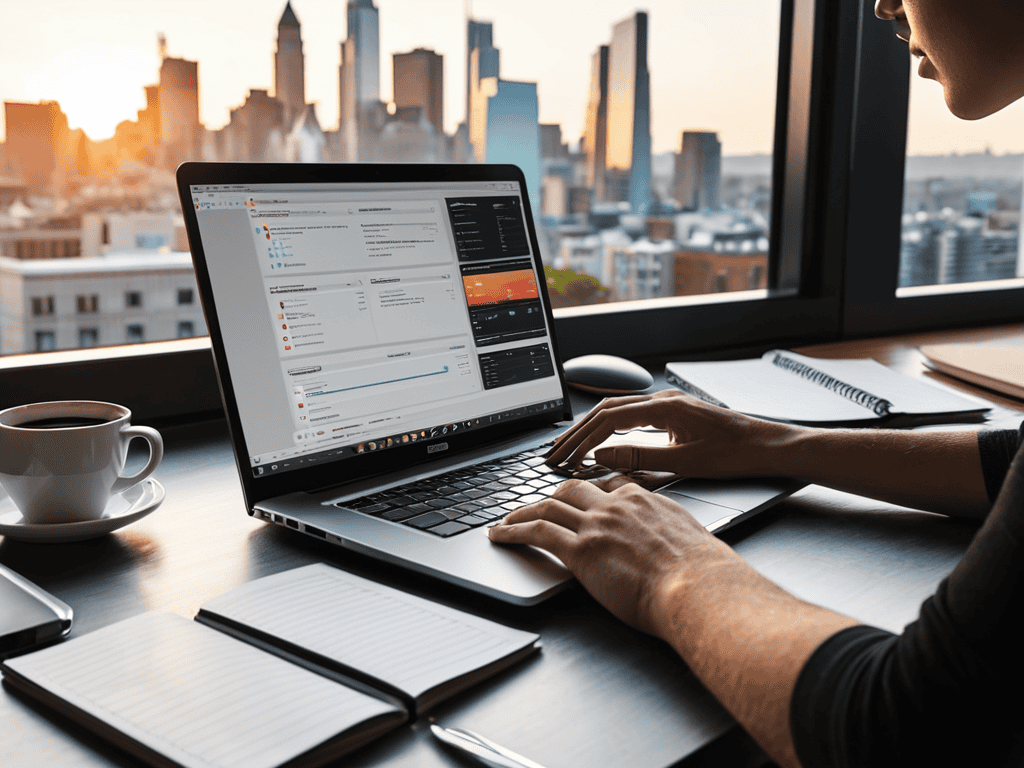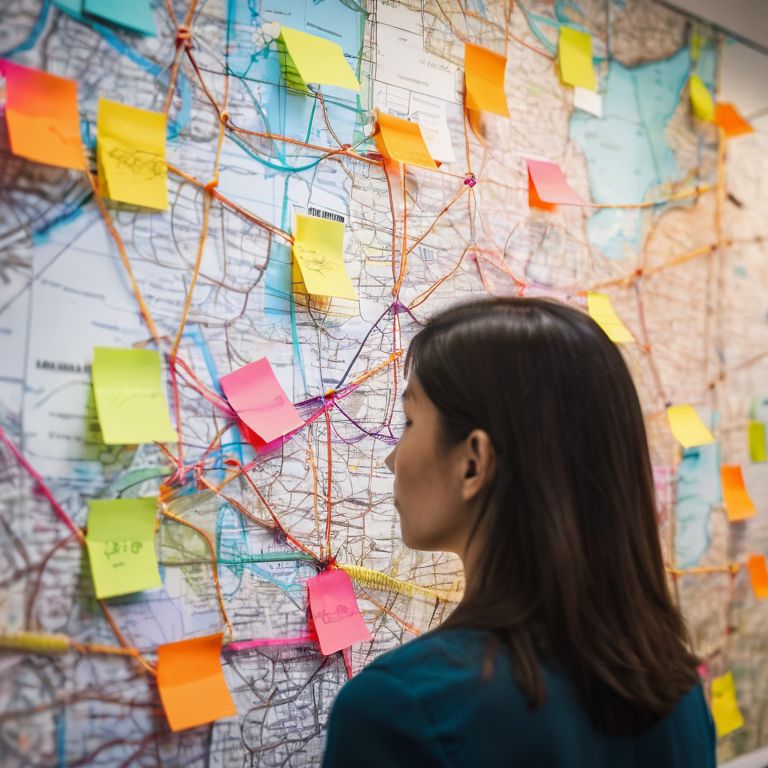I still remember the day I realized I had no idea where my money was going – it was like trying to navigate a foreign city without a map. I had heard the usual advice on how to track your expenses, but it all seemed so overwhelming. Everywhere I turned, I was told to “just use a budgeting app” or “start a spreadsheet,” but no one explained how to actually make it a habit. The truth is, tracking your expenses isn’t about using the latest tech gadget or following some complicated system – it’s about taking control of your financial life, one simple step at a time.
In this article, I’ll share my personal, no-nonsense approach to how to track your expenses. You’ll learn how to create a customized system that works for you, not against you. I’ll walk you through the exact steps I took to go from financially clueless to cash-confident, and provide you with practical tips and tools to help you stay on track. By the end of this guide, you’ll have a clear understanding of how to make expense tracking a sustainable part of your daily routine, and be well on your way to achieving your financial goals.
Table of Contents
Guide Overview: What You'll Need

Total Time: 1 hour 30 minutes
Estimated Cost: $0 – $10
Difficulty Level: Easy
Tools Required
- Pen (for writing down expenses)
- Pencil (for erasing and adjusting entries)
- Calculator (for totaling expenses)
Supplies & Materials
- Notebook (dedicated to expense tracking)
- Folder (for storing receipts and invoices)
- Spreadsheet Software (optional, for digital tracking)
Step-by-Step Instructions
- 1. First, let’s start by gathering all the necessary materials to track your expenses effectively. This includes your bank statements, credit card bills, receipts, and any other financial documents that show your spending habits. I like to use a bullet journal to keep all my financial information organized, but you can use any method that works for you.
- 2. Next, choose a method for tracking your expenses that suits your lifestyle. You can use a spreadsheet, a budgeting app, or even just a simple notebook. The key is to find a system that you’ll stick to and that makes it easy to record every transaction. I personally love using apps like Mint or Personal Capital because they link directly to my bank accounts and credit cards, making it easy to see where my money is going.
- 3. Now, it’s time to categorize your expenses. This means grouping your spending into categories like housing, food, transportation, entertainment, and so on. This will help you see where your money is going and make decisions about where you can cut back. I like to use a simple system with just a few categories to keep things easy to manage.
- 4. For each category, set a budget target. This is the amount you aim to spend in that category each month. Be realistic and base your targets on your past spending habits. Remember, the goal is to create a sustainable budget that you can stick to, not to try to make drastic changes all at once.
- 5. Once you have your budget targets in place, it’s time to start tracking your expenses in real-time. This means recording every transaction, no matter how small, as you make it. You can use your chosen tracking method to do this. I find that using an app on my phone makes it easy to stay on top of my spending throughout the day.
- 6. At the end of each month, take some time to review your budget. Look at how your actual spending compares to your budget targets. Identify areas where you went over budget and think about how you can make adjustments for the next month. This is also a good time to celebrate your successes and see how far you’ve come.
- 7. Finally, use your budget review to make adjustments for the future. This might mean cutting back on unnecessary expenses, finding ways to reduce costs in certain categories, or adjusting your budget targets based on changes in your income or expenses. The key is to stay flexible and be willing to make changes as needed to keep your budget on track.
Mastering Expense Tracking

As you become more comfortable with tracking your expenses, it’s essential to master the art of categorization. This involves assigning each expense to a specific category, such as housing, transportation, or food. By doing so, you’ll be able to gain a clearer understanding of where your money is going and make more informed decisions about your spending habits.
To take your expense tracking to the next level, consider implementing best practices for expense categorization. This can include using mobile apps for receipt scanning, which can help streamline the process and reduce errors. Additionally, automating expense reports can save you time and effort, allowing you to focus on more important tasks.
By following these tips and staying consistent, you’ll be well on your way to achieving financial clarity. Remember to regularly review your expense tracking progress and make adjustments as needed. With time and practice, you’ll become more accurate in your expense forecasting, enabling you to make smarter financial decisions and reach your goals.
Ai Powered Expense Analysis Tips
To take your expense tracking to the next level, consider leveraging AI-powered tools for analysis. These tools can help you identify trends, categorize expenses, and even predict future spending. By automating the analysis process, you’ll save time and gain valuable insights into your financial habits.
I recommend exploring AI-driven expense tracking apps that can learn your spending patterns and provide personalized recommendations for improvement. These apps can help you stay on top of your finances, make data-driven decisions, and achieve your long-term financial goals.
Automating Reports for Freelancers
As a freelancer, automating reports can be a game-changer for expense tracking. I recommend setting up automatic expense categorization and monthly report generation. This way, you’ll have a clear overview of your spending without lifting a finger. By leveraging tools like accounting software or spreadsheet templates, you can streamline your expense tracking and focus on what matters most – your business.
To get started, explore automation features in your existing accounting tools or consider integrating a new platform that offers seamless report generation. I’ve found that scheduling regular reports helps me stay on top of my finances and make informed decisions. By automating this process, you’ll save time and reduce the likelihood of human error, ensuring your expense tracking is accurate and reliable.
5 Essential Tips to Turbocharge Your Expense Tracking

- Set up a centralized expense tracking system that works for you, whether it’s a spreadsheet, an app, or a bullet journal, to ensure all your expenses are recorded in one place
- Implement a daily habit of logging expenses, no matter how small, to avoid forgotten transactions and ensure accuracy
- Categorize your expenses into needs (housing, food, utilities) and wants (entertainment, hobbies) to better understand your spending patterns and make informed financial decisions
- Utilize automation wherever possible, such as setting up automatic transfers for savings or using apps that automatically categorize and track your expenses
- Schedule regular review sessions, ideally weekly or monthly, to analyze your expense reports, identify areas for improvement, and adjust your budget accordingly to stay on track with your financial goals
Key Takeaways for Expense Tracking Mastery
By following a structured approach to tracking expenses, you can gain a clear understanding of your financial situation and make informed decisions to achieve stability and growth
Automating reports and leveraging AI-powered tools can significantly streamline your expense tracking process, especially for freelancers and small business owners, allowing for more efficient time management and reduced errors
Remember, the goal of expense tracking is not just to monitor spending, but to create a roadmap for financial success; by regularly reviewing and adjusting your budget, you can stay on track to meet your long-term financial objectives
Tracking Expenses with Clarity
The moment you start tracking your expenses is the moment you take back control of your financial future – it’s not about depriving yourself, but about making conscious choices that align with your dreams, one transaction at a time.
Rachel Evans
Taking Control of Your Finances: A Conclusion
As we’ve journeyed through this step-by-step guide on how to track your expenses, you’ve learned the importance of understanding where your money is going, and how to use that information to make informed decisions about your financial future. From setting up a budget to automating reports and leveraging AI-powered expense analysis, you now have the tools to master your financial landscape. Remember, tracking your expenses is not just about accounting; it’s about gaining financial clarity and making intentional choices that align with your goals.
As you move forward, keep in mind that financial stability is a continuous process, not a destination. It’s about making small, consistent changes that add up over time. So, don’t be too hard on yourself if you slip up – simply acknowledge the setback and get back on track. With persistence and the right mindset, you’ll be well on your way to achieving long-term financial success and living a more fulfilling life. Congratulations on taking the first steps towards a brighter financial future!
Frequently Asked Questions
What are the most common expense tracking mistakes I should avoid?
Let’s get real – common expense tracking mistakes include forgetting to log small purchases, misclassifying expenses, and not regularly reviewing reports. I’ve seen it happen, even to the most diligent trackers. To avoid these pitfalls, set reminders, create clear categories, and schedule monthly reviews. Trust me, it’s worth the extra effort to stay on top of your finances.
How can I effectively categorize my expenses to get a clearer picture of my spending habits?
To categorize your expenses effectively, start by grouping similar spending habits together, such as housing, transportation, and food. I recommend using the 50/30/20 rule as a guideline: 50% for necessities, 30% for discretionary spending, and 20% for saving and debt repayment. This will give you a clear picture of where your money is going.
Are there any recommended expense tracking apps or tools that can make the process easier and more automated?
For effortless expense tracking, I swear by apps like Mint, You Need a Budget (YNAB), and Expensify. These tools automatically categorize transactions, send reminders, and even offer AI-powered spending insights. I’ve also had great success with spreadsheet templates and budgeting plugins – I’ll share my favorites in the next module!














